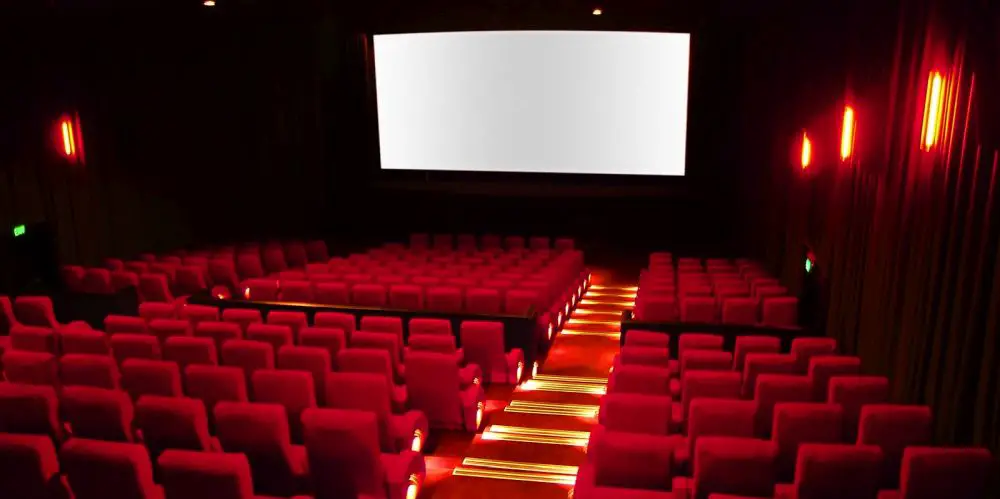Cinematic Advertisements: Forgotten Potential?

Joseph is an Austro-American media and communications student currently living…
Why do we visit cinemas and how come we take the time to drive a considerable distance to pay upwards of $10 per film? Maybe it is to see a film that you had been anticipating for some time, or because a group of friends decided to check out a new release. No matter the reason, the focus is always on the film as the main motivator. However, seasoned moviegoers know that, while the cinema’s website might say a film will start at a specific time, they still have to sit through a variety of commercials, advertisements and film trailers beforehand.
As annoying as these may seem to some, they play a vital role in establishing financial stability for cinemas. It is easy to believe that commercials shown are the same as those on television, but with similarities come differences. Film is only one part of the overall cinematic experience, and it is worth exploring what the other, more corporate aspect, entails.
Uncovering Cinematic Advertising
It is easy to assume that advertisements are nothing more than short videos or posters that focus on selling a product or service. Yet, companies primarily aim to transmit messages through these ads that will change the purchasing intent of the viewers. That is not the only goal, however, as it also aims to provoke emotions within the consumer that are subsequently associated with the brand. Cinemas offer two distinct ways that a company can accomplish this, either as part of the film through “product placement”, or as a classic “cinema advertisement” that is shown shortly before.

Posters in cinemas are primarily reserved for films, which forces advertisers to focus on screening their ads before the movies start. They do not aimlessly advertise, as they specifically cater their advertisements to an audience that would most likely choose that brand. After market research is conducted, specific films are evaluated on what audience they attract and, consequently, what advertisements are the most effective. Genre films and yearly blockbusters are naturally the most popular, as they attract a wide audience and to some degree are easier to predict.
A Lack of Creativity
There is a tendency for companies to recycle advertisements for television and cinema, which is commonly the result of a lack in budget. Cinema does offer more than just the go-to “cinema spot”, which is the definition of a classic commercial shown in cinemas. The oldest, yet nowadays uncommon, “dia commercial” was nothing more than consecutive pictures shown with the product.
Both these types of advertisements are very simple and do not truly add to the experience of being in a cinema, as they are something that can be watched at home. It highlights that budgetary restraints keep companies from truly being creative and make cinema advertisement more of an extra, rather than a primary focus.

A type of cinema advertisement that has not truly been utilised for quite some time is the “advertisement film”, which is a short film that integrates a product or service into the plot. It is an amalgam of both the classic cinema advertisements and product placement. Moreover, it is considered closer to a film than a short advertisement, which gives off more of a cinematic feeling and adds value to the audience’s experience.
Establishing exclusivity in cinemas is the entire point of why films are not released on DVD, digital or Blu-ray until months later, and this is an aspect forgotten by advertisers. Companies are so focused on reaching as many people as possible for minimum costs that their advertisements have become stale and one-note. This is an aspect that has also affected film trailers, as they have started to establish patterns that make them all feel the same.
The Distractions of Cinema
This lack of creativity in cinema advertisements is sadly easy to explain by simply observing the way people interact before a film is shown. People regularly visit the cinema in groups, and before the lights dim for the start of the film, they tend to converse with each other. If you are in a packed cinema, the audience can be louder than whatever is being shown on screen. In the digital age, cinema has won a new enemy in the form of smartphones, as people tend to check e-mails, chats or messages before they are unavailable for up to three hours, depending on the film.

One could even argue that the film is the greatest distraction of all. People go to see a specific film and have certain expectations before it starts. If you look at the modern hype culture, their primary focus is to see the film and maybe in addition see trailers for upcoming films that are similar. While some will discuss random topics before the lights dim, others will be talking about what they can expect of the film. Hype culture takes away the importance of advertisements as ads, as they function more as buildup towards the actual film. At the end of day, they are commonly ignored and forgotten.
There have been some studies focusing on how the cinema environment strongly impacts the success of advertisements. A notably study focused on how eating popcorn can be distracting, and, as absurd as it sounds, chewing loudly makes you ignore whatever is being shown on screen. Some people have the tendency to eat popcorn while anticipating the start of the film, and get impatient as advertisements roll out. If you add talking to friends, or checking your phone, it is understandable that watching advertisements in cinema are more of an afterthought.
A Cinematic Potential
Advertising is an essential part of film and going to the cinema, and our habits as viewers have been around as long as cinema has existed. If they weren’t in some way still adding to cinema revenue, they would have died out a long time ago. However, advertising campaigns are spread out over various media outlets to be as effective as possible and don’t only rely on the cinematic environment to get their message across.
However, the cinema still offers a unique environment for companies. People generally carefully consider what they’ll be watching before going to the movies. They want to see a film and experience something that they cannot at home. Companies should take this into consideration and expand upon this experience through their advertisements. People may be distracted with popcorn, but, like a great film, even an ad can potentially keep an audience’s attention away from their snacks.
What do you think about advertisements in cinema? Do you agree that they lack creativity? Was there a commercial that ever caught your attention before a film?
Does content like this matter to you?
Become a Member and support film journalism. Unlock access to all of Film Inquiry`s great articles. Join a community of like-minded readers who are passionate about cinema - get access to our private members Network, give back to independent filmmakers, and more.
Joseph is an Austro-American media and communications student currently living in Austria, who grew up with film most of his life. Having won a new appreciation of cinema as an art form and as an industry, he aims to learn as much about it as he can.













